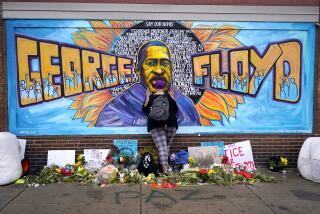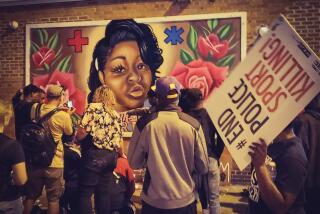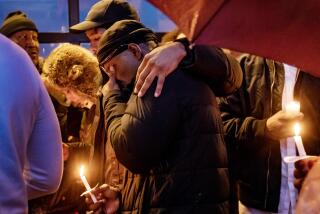Growing protests raise questions about race and police; what’s going on?
Tens of thousands of Americans took to the streets across the nation and hundreds of arrests were reported in the aftermath of recent decisions not to charge white police officers involved in the deaths of African Americans. It may not be the biggest mass movement in U.S. history, but it has certainly become one of the most vociferous in recent times. Here is a primer to understanding how race and police tactics have mixed into a deadly brew.
What happened this week?
In cities including Atlanta, Boston, Chicago, Denver, Detroit, Minneapolis, Oakland, San Francisco and Washington, protesters chanting “Hands up!” and “I can’t breathe!” marched and blocked traffic on highways, shut down bridges and clogged intersections. Politicians talked about the need for better police training, body cameras and changes in the grand jury process to restore faith in a tested judicial system.
What prompted the outpouring?
There have been three recent cases that have drawn national attention in New York; Ferguson, Mo.; and Cleveland. In the first case, Eric Garner, 43, died after police used what appeared to be a chokehold to subdue the unarmed man who was suspected of selling cigarettes illegally on July 17. In Missouri, a white police officer on Aug. 9 fatally shot unarmed Michael Brown, 18, after the pair was said to have scuffled in the officer’s car and Brown, an African American, fled. According to various witness accounts, Brown either charged the officer or was trying to surrender with arms up when he was shot to death. In Cleveland, a rookie police officer shot a 12-year-old African American boy who was displaying what turned out to be a toy gun in a park on Nov. 22.
Grand juries in Staten Island and Missouri have decided not to charge the officers. The Cleveland case is pending before a grand jury.
Why did these cases prompt such anger and demonstrations?
One of the reasons is that the cases combine two different, but often related streams: the fear of police brutality and the fear that people of color are special targets of police actions. The two are linked in most peoples’ minds. For example, an August poll by the Pew Research Center for People & the Press found that most Americans give relatively low marks to police departments when it comes to holding officers accountable for misconduct, using the appropriate amount of force, and treating racial and ethnic groups equally. The response are skewed by race with blacks overwhelmingly more distrustful of the police than whites.
Is the fear of racial discrimination justified?
That often depends on the politics of who is answering. Most civil rights leaders and prominent public officials -- from President Obama, the nation’s first African American president, to New York Mayor Bill de Blasio, a white man who is married to a black woman and has children he has warned about confrontations with police – say yes.
According to an analysis by the journalist group ProPublica, young black males in recent years were at 21 times greater risk of being shot dead by police than their white counterparts. Of the 1,217 deadly police shootings from 2010 to 2012 captured in the federal data examined by ProPublica, blacks, age 15 to 19, were killed at a rate of 31.17 per million, while just 1.47 per million white males in that age range died at the hands of police.
Conservatives dispute those numbers and argue that the most recent federal numbers show that in 2012, 123 African Americans were shot dead by police while 326 whites were killed by police bullets.
Both sets of numbers are true but the differences in what they mean has led many researchers to call for better data.
Is it just a questions of numbers?
The numbers are important guideposts, but they obviously don’t tell the whole story. There have long been deep-seated fears among minority groups about police. In Ferguson, for example, there was an overwhelmingly white police force patrolling an overwhelmingly black population, which creates fears in the community, according to activists. Blacks, and many whites, argue that African American suffer disproportionately at the hands of all parts of the criminal justice system; about 40% of the number of inmates in the U.S. are African Americans, though they are only about 12% of the population.
Culture has also played a role. Stories about rich blacks being unable to get taxicabs or being arrested for “driving while black” have become well-known plot devices on television and in films. The pointed hashtag #crimingwhilewhite recently lighted up Twitter as part of the ongoing protests over the shootings.
Are there differences among the three cases?
All three touched the raw nerve about race and police, but the Staten Island case was special because it was captured on video and the recording has gone viral. Anyone who wants to can see the video of Garner being brought to the ground by several officers. One police officer has his arms around his neck in an apparent chokehold, which has been banned by the New York Police Department.
Why would a video make a difference?
Many people have argued that putting cameras on police officers would offer an unbiased, impartial record of encounters by police, protecting suspects from brutality and officers from false charges. The Obama administration has proposed $75 million for 50,000 body cameras for police. However, the Garner video raises questions about the value of such video in prosecuting police since the grand jury saw it and decided not to indict.
Aren’t charges by the federal government a possibility?
Yes, but the federal government is using civil rights laws rather than state laws that govern brutality. To win, the federal government will have to show that the victims’ rights were violated, a different set of circumstances than the localities faced in dealing with brutality issues.
What could be next?
Activists argue that what is also needed is some mechanism to supersede local prosecutors, who often are forced to maintain close relationships with police. In the past, New York had a special police prosecutor to handle corruption cases, but that office was dropped in favor of letting local prosecutors keep jurisdiction.
New York Gov. Andrew M. Cuomo has said he will explore the issue.
More to Read
Sign up for Essential California
The most important California stories and recommendations in your inbox every morning.
You may occasionally receive promotional content from the Los Angeles Times.











